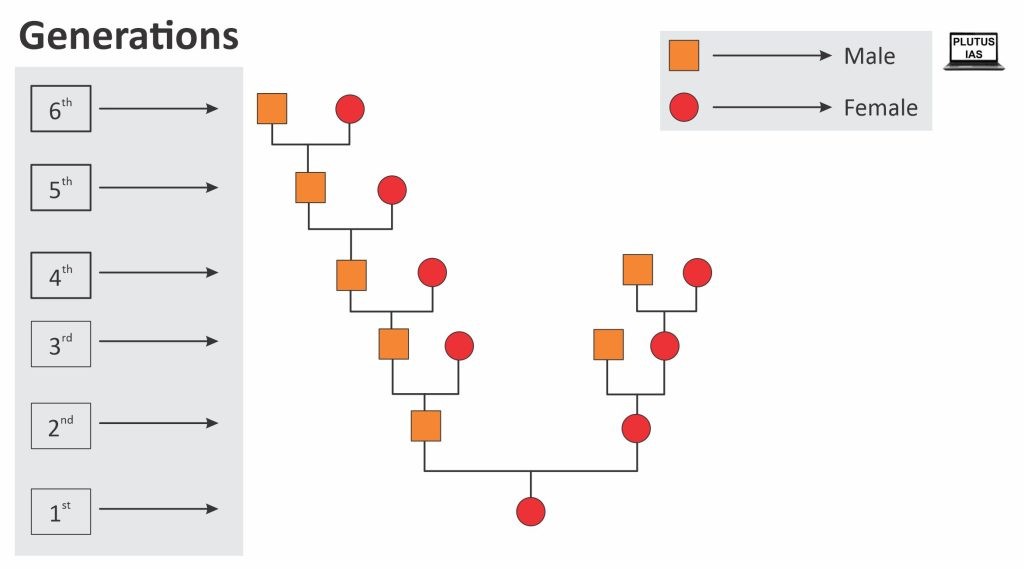02 Feb Sapinda Marriage
This article covers ‘Daily Current Affairs’ and the topic details of “Sapinda Marriage” .This topic is relevant in the “Indian Society” section of the UPSC CSE exam.
Why in the News?
In a recent legal development, the Delhi High Court, in the case of Neetu Grover v. Union of India & Ors, 2024, deliberated on the constitutionality of Section 5(v) of the Hindu Marriage Act, 1955 (HMA), which prohibits marriages between Hindus if they are “Sapindas” of each other. This article delves into the context of the legal challenge, the petitioner’s arguments, the court’s ruling, and a comprehensive understanding of Sapinda marriages, their regulations, and a comparative analysis of similar laws in other countries.
Context and Legal Challenge:
- Petitioner’s Arguments:
- In 2007, the court declared the petitioner’s marriage void after her husband demonstrated that they had entered into a Sapinda marriage, and the woman did not belong to a community where such marriages were considered a custom.
- The petitioner challenged the constitutional validity of Section 5(v), contending that Sapinda marriages are prevalent even without proof of custom.
- She argued that the section, which requires an established custom for Sapinda marriages, violates the right to equality under Article 14 of the Constitution. Additionally, the petitioner asserted that the consent of both families should validate the marriage.
- Delhi Court’s Order:
The Delhi High Court dismissed the argument, emphasizing the absence of “stringent proof” of an established custom presented by the petitioner. The court maintained that the regulation of partner choice in marriage is permissible and found no violation of the right to equality. The court stressed the need for “cogent legal grounds” to show that the prohibition against Sapinda marriages was unconstitutional.
Understanding Sapinda Marriages:
- Definition and Lineal Ascendants: A Sapinda marriage involves individuals related within a specified degree of closeness. As defined under Section 3 of the HMA, two persons are considered Sapindas if one is a lineal ascendant of the other in the limits of Sapinda relationship or if they share a common lineal ascendant within those limits.
- Lineal Ascendant Restrictions: The HMA restricts marriage with close relatives within a specified number of generations. On the mother’s side, the prohibition extends up to three generations, while on the father’s side, it reaches up to five generations
- Section 5(v) of HMA 1955: Declaration of Void Marriages: Marriages violating Section 5(v) as Sapinda marriages, without an established custom, are declared void, rendering them invalid from the beginning.

Exceptions:
The exception, outlined in Section 5(v), allows marriages if the customs of the individuals permit Sapinda marriages. An established custom within the community, tribe, group, or family, continuously and uniformly observed for a long time, serves as a valid exception. The definition of “custom” in Section 3(a) requires continuous, uniform observance and legitimacy among Hindus to have the “force of law.” Certain conditions must be met for a custom to be valid.
Comparative Analysis:
- France and Belgium: Abolished the crime of incest, allowing marriages between consenting adults. Incest is an act of sexual contact or marriage between a male and a female who are closely related by blood.
- Republic of Ireland: While recognizing same-sex marriages, the law on incest has not been updated to explicitly include individuals in same-sex relationships.
- United States: Generally bans incestuous marriages in all 50 states, with variations in laws related to incestuous relationships between consenting adults. Some states, like New Jersey and Rhode Island, allow such relationships under specific conditions.
- Italy: Incest is considered a crime only if it causes a “public scandal,” implying a legal framework that considers circumstances.
- Portugal: Portuguese law does not criminalize incest, suggesting marriages between close relatives may not be prohibited.
Download plutus ias current affairs eng med 2nd Feb 2024
Prelims practice questions
Q1) Consider the following statements:
1) Hindu Family Law governs Hindu marriages in India
2) Sikh community follows the ‘Anand Karaj’ ceremony for marriage
3) Indian Penal Code prohibits bigamy in India
Which of the statements above are correct?
a) 1 and 2
b) 2 and 3
c) 1 and 3
d) 1,2 and 3
ANSWER: B
Q2) What is ‘Kanyadaan’ in the context of Hindu marriages?
a) Bridal attire
b) Marriage ritual
c) Dowry exchange
d) Giving away the bride
Answer: D
Mains practice questions
Q1) Jaya Jaitly’s recommendation proposes equalizing the legal marriage age at 21. Do you believe this will truly achieve gender parity, or are there deeper societal factors that need to be addressed alongside legal changes?
Q2) The Prohibition of Child Marriage Act 2006 raised the legal marriage age to 18 for women. What are the biggest challenges to enforcing this law effectively, and what strategies could be implemented to address them?
I am a content developer and have done my Post Graduation in Political Science. I have given 2 UPSC mains, 1 IB ACIO interview and have cleared UGC NET JRF too.



No Comments